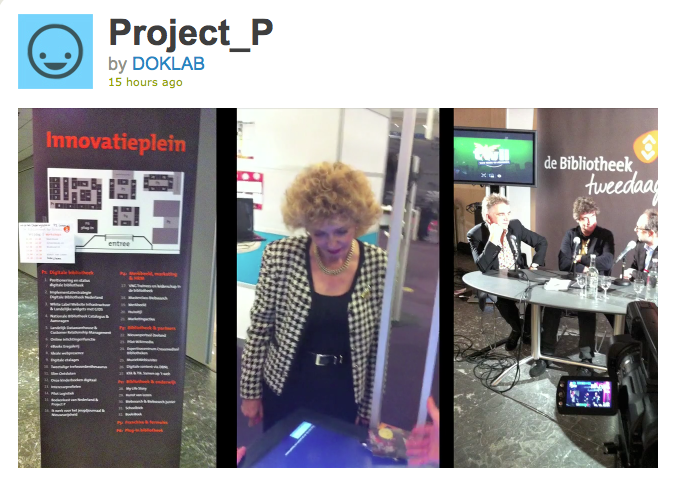 DOK, the Library Concept Center in the Netherlands and home of the Shanachies has been working on digital storytelling tools for libraries and museums for a number of years now and have come up with new applications for Multi Touch that allow the users to bring their own content to the library.
DOK, the Library Concept Center in the Netherlands and home of the Shanachies has been working on digital storytelling tools for libraries and museums for a number of years now and have come up with new applications for Multi Touch that allow the users to bring their own content to the library.
There have been a number of articles on the earlier apps DOK has developed such as the Heritage Browser. The Heritage Browser displays archival material from the City Archive in the library’s public space via a Microsoft Surface table. DOK has linked the material of the City Archive to ClienTrix (DOK’s internally developed ILS) and use Open Street Maps to display a map of the city on the table. Users can use their library membershipcard to find photos of their own street from as early as 1910 or they can click on a street or location on the map to find images of a particular area. Navigating via easy-to-use controls, users can work together, tell stories, and share pictures (http://vimeo.com/5643953)
Since June 2009, we have tested this browsing tool at several locations in the library, each time further optimizing and elaborating on the application. Starting this year, the multitouch table has a fixed spot near the entrance of the library, within sight of visitors as they enter. It is almost continuously used, and available images are viewed over 1000 times more often on the table than they have ever been viewed on the website of the City Archive.
The next level
The succes of the Heritage Browser of course inspired the Innovators at DOK to look for new ways to use the possibilities of the multi touch tables and the challenge was to make it possible for users to bring their own photos and stories to the table to share with others. After testing several iterative prototypes and a large scale research among users they have managed to pull it off.
The next gen table allows users to add photos to the table and allows them to tag them or tell whole stories. It will be possible for libraries to work with themes on the table such as for intstance recepies to let people exchange their favorites and give advice on cooking. But of course it can also be a place where people respond and debate on political issues or local themes. Besides these possibilities this app offers the library a great tool to work together with partners such as the archives, museums, city council or others who benefit from this rich generated content.
The library as a community storyhouse may very well be a futureproof model.(http://vimeo.com/19950127)
For more info please mail: e.boekesteijn@dok.info
